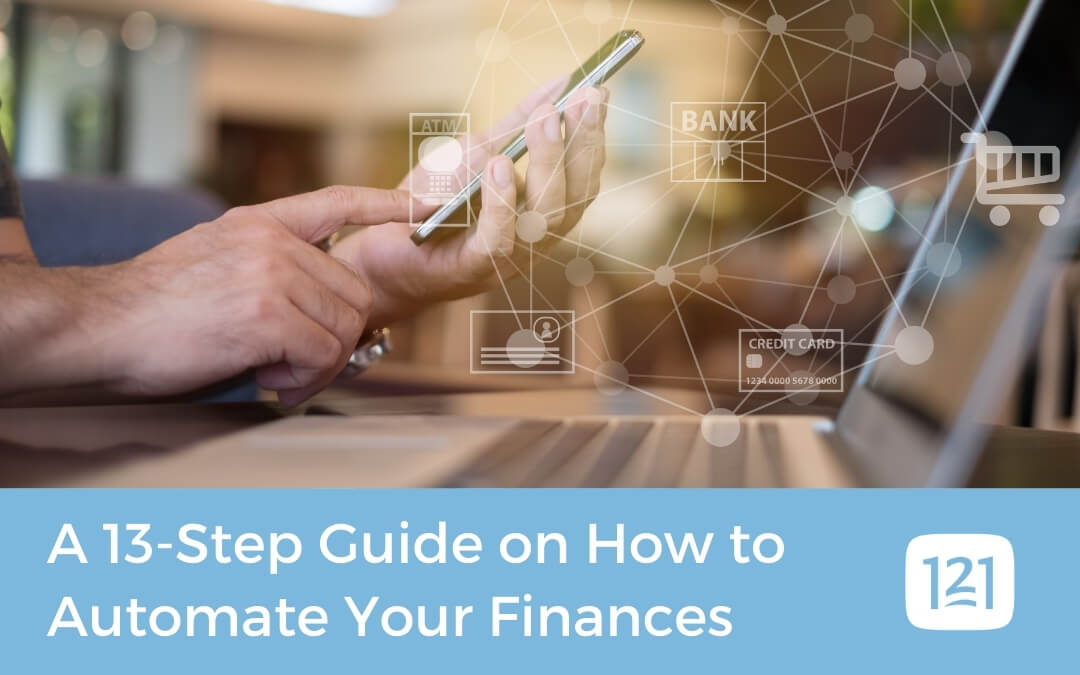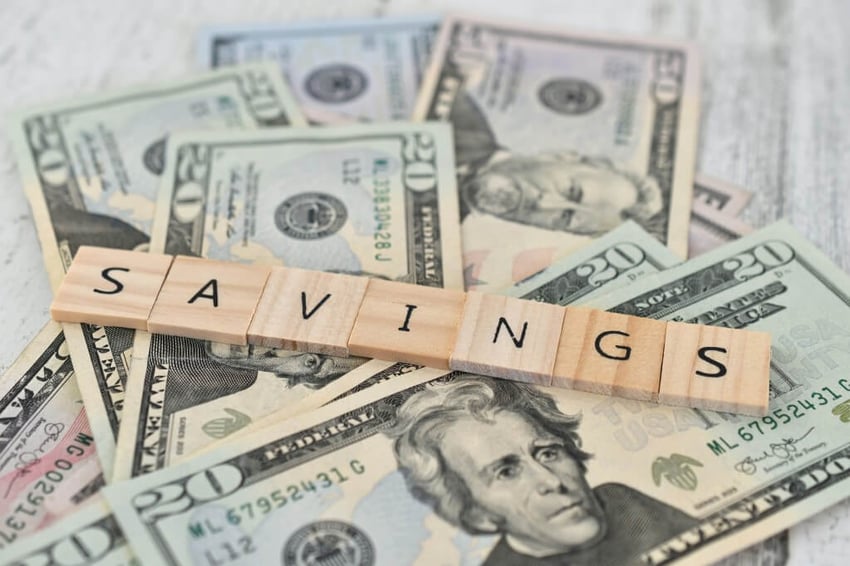
A 13-Step Guide on How to Automate Your Finances

Automating your finances says that you are willing to embrace leadership over your money and make managing it simpler.
For example, if you regularly forget to pay any debt on time, the late payments can affect your credit as well as your peace of mind. Putting bill-paying on autopilot helps you stay sprinting ahead instead of dragging behind.
Automating finances also helps create good saving habits without the hassle of thinking about it too much. It can relieve the stress of figuring out what needs to be paid every month.
The main reason automating finances is beneficial is because it enables people to reach their long-term goals faster.
Without a process to follow, it is easy to get off a financial track designed to save.
This step-by-step guide will show you how to automate your finances in the easiest way. When finished, you will be confident about how to start a personalized automation system to attain your long-term financial goals.
You'll learn how to:
1. Prepare your budget for financial automation
2. Open a primary checking account
3. Cushion your checking account
4. Decide on the role credit cards will play in automating your finances
5. Apply to receive your paycheck via direct deposit
6. Pay yourself first by depositing into your emergency fund and 401(k)/403(b)/IRA accounts
7. Automate deposits into your investment accounts
8. Set money aside for other living expenses
9. Automate brokerage account withdrawals
10. Automate bill payments
11. Streamline the bill-paying process
12. Increase your contributions as your income grows
13. Stay focused on your long-term goals
Okay, let's get started!
Step 1. Prepare Your Budget for Financial Automation
Use a computer word processing program or paper journal and write down your financial goals.

For example:
- Decide if you want to pay down debts or invest
- Determine which has the highest priority in your world.
- Write down what you must pay every month.
- List all of your recurring bills along with their due dates.
Step 2: Open a Primary Checking Account
Your primary checking account is where your money will be transferred in and out.
This will happen based on a schedule you set to pay your bills and make deposits to your savings and investment accounts.
Step 3: Cushion Your Checking Account
Deposit into your primary checking account, at a minimum, an extra 25 to 50 percent of your monthly expenses.
Do this so that you will have protection against any deposit and withdrawal timing errors that may occasionally happen.
For example, on a holiday or weekend, your paycheck may be delayed when an automatic payment gets posted.
If you have variable income where your payment amount is uncertain for each pay period, deposit a larger amount to cushion your monthly expenses. Add 100 to 150 percent instead of the low end of 25 to 50 percent.
Step 4: Decide on the Role Credit Cards will Play in Automating Your Finances
Managing credit cards can be a challenge for some. If you use credit cards, consider which ones pay the highest percentage cash back on purchases.

You can strategically automate paying the largest bills monthly using credit cards and earn cash back, but know that using credit cards is not for everyone.
Step 5: Apply to Receive Your Paycheck via Direct Deposit
A direct deposit payment option falls in line with automating your finances. It is also the speediest way to get paid.
Today, many employers solely pay this way because the process is efficient and reliable. If you don't already have direct deposit, ask your employer about it and sign up if it is an option.
Step 6: Pay Yourself First By Depositing into Your Emergency Fund and 401(k)/403(b)/IRA Accounts
When we say "pay yourself first", we mean to make sure that your financial needs are taken care of in case of an emergency situation.

- "Pay yourself" after you have deposited your extra cushion money in your checking account as directed in Step 3. If you skip that step, your system could tumble. To pay yourself, deposit a percentage of your income directly into your emergency fund savings and retirement accounts.
- Grow your emergency fund to handle at least 3 months of living expenses. Ideally, 6 months of coverage is best.
- Aim for 10 percent of your income for your retirement account. Furthermore, your company might sponsor a 401(k) or 403(b) plan and match your deposits. You will want to receive 100 percent matching from your employer if you can get it! Also, find out how much of your income your employer is willing to match, and then go depositing the maximum if you can. Depending on your financial situation, it may not be feasible for you to deposit the percentage of income your employer is willing to match at 100 percent. Truly, that percentage amount is what you'll want to reach. If that is not possible at this time, make it a point to at least deposit something from each pay into your emergency fund and 401(k).
- Your employer can also help with the automation process by directly depositing a percentage of your paycheck into your savings account. This will save you from having to do it manually. Not all employers offer 401(k) plans. If yours doesn't, set up your own Personal Roth IRA or Traditional IRA.
Step 7: Automate Deposits Into Your Investment Accounts
Automate investment account deposits. This way, you let go of the anxiety of having to check the market every hour.
Step 8: Set Money Aside for Other Living Expenses
Put money aside for entertainment, groceries, bills that you get on occasion (non-recurring), and other miscellaneous expenses. If you forget this step, you may be lured into withdrawing from your savings.
Personal non-recurring expenses may include items such as:
- Car registration fees
- Any other miscellaneous item that occurs once in a while
Non-recurring expenses are subjective. A good way to gauge them is to think about the upcoming season and what special expenses may occur during that time of year.
Step 9: Automate Brokerage Account Withdrawals
If you have an online brokerage account, automate deposits from it into your retirement account or savings account, or both.
However, be sure to schedule any withdrawals the day following your payday - not before or on the same day as you get paid. Cover yourself from payday to payday.
Step 10: Automate Bill Payments
Most companies accept automatic bill payments. This includes credit card issuing institutions.
- Memberships
- Mortgage/Rent
- Subscriptions
- Utilities
As always, check with the organization to be sure they accept automatic payments electronically. Most would appreciate the advantage of not having to use other methods to collect payments.
You may also have the option to set up online bill-paying directly through your banking institution. This might be the simplest way to take care of all of your recurring bills. Once you set up the system, you won't have to do it again.
Earlier, we touched on whether you'd like to use one or more of your highest reward earning credit cards to pay your largest bills. When you automate bill paying this way, you'd earn cashback.
If you connect your checking or savings account to a credit card, you can have the cashback amounts directly deposited into your checking or savings accounts.
Just be sure that you don't confuse credit card earnings with a cash advance, because, typically, that transaction has a high-interest rate and that will work against your savings goals.
Step 11: Streamline the Bill-Paying Process
When bills are due at several different times of the month, it's more difficult to manage. Many organizations allow their customers the convenience of setting their own due dates.

Make a plan to call each organization and ask if you can change your due date to a date earlier or later in the month.
You could also state that you're trying to automate your payments so they will be paid on time each month. Try to schedule due dates a couple of days after your payday to allow for any untimely delays.
But first, before you make any calls, study your budget carefully. For instance, if you receive your pay on the 1st and 15th, twice a month, you can have your due dates set for shortly after the 1st.
Another idea is to split up the schedule and have some of your bills due earlier in the month with the remaining ones due later in the month. Experiment and fine-tune the process to determine which schedule works best for you.
Step 12: Increase Your Contributions As Your Income Grows
When your paycheck grows, invest more money into your 401(k). This works in your favor because if your income decreases, you won't be tied to depositing the same amount.
In the same way, if your income increases, you'll benefit by being able to deposit more into your 401(k). Alternatively, consider raising your contribution amount annually to keep your account growing.
Step 13: Stay Focused on Your Long-Term Goals
It takes effort, commitment, and willpower to save. The good news is that once you've learned the best way to automate your finances, it will become a habit. Saving gives you a sense of freedom.
To help you stay centered on your goals, remember that the cost of living continues to rise. To retire well, we must save more.
Retirement plans were developed out of a genuine need for people to earn and save as much as possible for their golden years.
Automating Your Finances Works
Technology advancements have made banking easier for all of us. Even so, nothing is automatic every single time. But automating payments is as good as it gets. It works.
Although automating finances can be advantageous, it's always best to periodically keep an eye on things to avoid running into any issues.

To make sure things go smoothly, you can do the folowing:
- Log into your primary checking account and check your statements regularly
- Confirm that bills were paid as scheduled
- Allow room in your budget for non-recurring expenses
In summary
In this step-by-step guide, you learned about automating your finances in a few simple steps. Each step is important. Remember that the entire process begins with setting up your budget.
The steps that followed detailed how to receive your paycheck from your employer into your bank account via direct deposit.
Then we went over the essential step of paying yourself first, making automatic deposits into your investment accounts, and setting up how your bills are paid automatically.
Next Steps
Now is a great time to open up a primary checking account with a trusted credit union. This way, you can get your finance automation goals started.
At 121 Financial Credit Union, we treat our members like people, not numbers. We're community-oriented financial experts who that believe with the right tools and knowledgeable support, everyone can reach their financial goals.
For more than 85 years, our members have enjoyed banking with a financial institution that has a small-town feel with big-town benefits.
Based in Jacksonville, Florida, we have several locations to serve those who reside, attend school, or work in the Northeast Florida area.
Credit union membership has it's advantages. Two of them are investment and retirement planning and financial counseling.
Best of all, they're both free with membership. Now that you have learned how to automate your finances, take the next step. Become a 121 Financial Credit Union member, and open an online banking account with us today.
